This article was medically reviewed by Mark Ziats, MD, PhD. Dr. Mark Ziats is an Internal Medicine Physician, Scientist, Entrepreneur, and the Medical Director of xBiotech. With over five years of experience, he specializes in biotechnology, genomics, and medical devices. He earned a Doctor of Medicine degree from Baylor College of Medicine, a Ph.D. in Genetics from the University of Cambridge, and a BS in Biochemistry and Chemistry from Clemson University. He also completed the INNoVATE Program in Biotechnology Entrepreneurship at The Johns Hopkins University - Carey Business School. Dr. Ziats is board certified by the American Board of Internal Medicine.
There are 7 references cited in this article, which can be found at the bottom of the page.
This article has been viewed 261,823 times.
Studies show that warts are caused by the human papillomavirus (HPV) and can come in many sizes, colors, and shapes.[1] They can appear anywhere on your body but are often found on your feet, face, and hands. Most warts will not cause illness or other health problems, though herpetic whitlow warts can be painful. Experts note that if your warts don't go away on their own, you can use over-the-counter treatment or prescribed medications to get rid of them.[2] You can also prevent the development of warts on your fingers by taking certain precautions. This article refers to the removal of common warts on fingers only, not genital warts.
Steps
Using Over-the-Counter Treatment
-
1Apply a salicylic acid pad or gel. Salicylic acid is a nonprescription wart removal option you can find at your local drugstore or pharmacy. It helps to dissolve the protein of the wart and the dead skin around it. Look for wart removal pads, plasters, gels or drops that contain 17 percent salicylic acid solution or patches that contain 15 percent salicylic acid.[3] [4]
- You will need to apply these products once a day for several weeks. For optimal results, soak your finger or fingers with the warts in warm water for 10 to 20 minutes. This will soften the skin of the wart. Then, file away at any dead skin on or around the wart with an emery board or a pumice stone. Once you have filed away the dead skin, apply the salicylic acid pad, gel, plaster or patch to the wart.
- You can then file away at the dead skin that appears on and around the wart between treatments with an emery board or a pumice stone. Do not share the board or pumice stone with anyone else and throw it away once the wart is removed.
- You may need to apply the salicylic acid for 12 weeks or more until the wart flattens and fades away. If the wart becomes irritated, sore, or red, you should stop using the salicylic acid product and talk to your doctor.
-
2Use over-the-counter freezing products. You can also use freezing products on the warts to try to remove them. Aerosol wart treatments can be purchased over-the-counter at your local drugstore or pharmacy. These sprays will freeze the warts at a temperature of minus 90°F (minus 57°C).[5] [6]
- Keep in mind over-the-counter freezing products will not work as well as liquid nitrogen agents applied by your doctor to the warts. The Food and Drug Administration (FDA) advises caution when using wart removers, as they are flammable and should not be used around fire or any heat sources.
Using Medical Treatment
-
1Get a prescription for chemical treatment from your doctor. Your doctor can suggest the use of prescription chemical treatments to try to kill off the skin cells of the warts. These treatments usually contain chemicals such as formaldehyde, glutaraldehyde, and silver nitrate.
- The side effects of these chemical treatments include the skin around the wart being stained brown, and burns to the skin surrounding the wart.[7]
- Your doctor may also suggest prescription-strength wart medication that contains salicylic acid. This medication will remove layers of the wart over time and is often more effective when used in combination with freezing or cryotherapy.
-
2Ask your doctor about cryotherapy. Cryotherapy is a procedure where your doctor applies liquid nitrogen to your wart, which causes a blister to form under and around your wart. The dead tissue can then be removed seven to ten days after the freezing. However, this method can trigger your immune system to fight viral warts and you may need repeat treatments done to remove the wart completely.[8] [9]
- Cryotherapy sessions usually take five to 15 minutes and can be painful. If the warts on your hands are large, they may need to be frozen several times before they are fully removed.
- There are several side effects of cryotherapy, including pain, blistering, and discolored skin around the wart.
-
3Consider laser removal of the warts. Your doctor may suggest that you try pulse-dye laser treatment to burn off tiny blood vessels in the wart. The infected tissue will then die and the wart will fall off.[10]
- Keep in mind the effectiveness of this method is limited. It can also cause pain and scarring around the affected area.
Using Unverified Home Remedies
-
1Try a duct tape treatment. Studies have been mixed on the effectiveness of duct tape as a removal treatment for warts. Many physicians believe the duct tape treatment to be no better than a placebo and not a very effective way to remove warts. However, there has been some documented success with the use of duct tape on warts.[11]
- You can try the duct tape method by covering the wart in duct tape or electrical tape for six days. After six days, you can soak the wart in water and then gently remove any dead skin on or around the wart with a pumice stone or an emery board.
- You will need to then let the wart be exposed to the open air for 12 hours and repeat the process again until the wart is removed.
-
2Use raw garlic. This home remedy claims that the caustic effect of garlic can make the warts blister and fall off. Keep in mind this is not a medically verified treatment and may not work as effectively as medical treatments for warts.[12]
- Crush one to two cloves of garlic in a mortar and pestle until it forms a paste. Apply the garlic to the warts and cover them with bandages so the garlic can interact with the warts.
- Re apply fresh garlic to the warts once a day but avoid putting the garlic on any of the healthy skin surrounding the warts. You can smear the healthy skin with petroleum jelly so the garlic does not stick to the skin.
-
3Soak the warts in apple cider vinegar. Apple cider vinegar will not kill the HPV that is causing the warts but it has a high acidity content that can help the skin on the wart to peel off and fall away. You may experience some soreness and swelling on the warts once you apply the apple cider vinegar, but this should fade after a few days. Keep in mind this is not a medically proven removal method for warts.[13]
- Soak one to two cotton balls in two tablespoons of apple cider vinegar. Squeeze out any excess vinegar from the cotton balls but make sure they are thoroughly soaked.
- Apply the cotton balls to your warts and secure each cotton ball with gauze or medical tape. Leave the apple cider vinegar on the warts overnight. Repeat this every night with fresh cotton balls for one to two weeks. After several days, the warts may appear darker or black, which is a good sign the apple cider vinegar is working. They will eventually fall off on their own.
-
4Apply basil leaves. Fresh basil contains several anti-viral components and can help to speed up the removal process of the warts. Be aware this is not a medically proven method for wart removal and should be used at your own discretion.[14]
- Use clean hands or a mortar and pestle to crush 1/4 cup of fresh basil leaves until they appear mushy and wet. Gently apply the crushed basil to your warts and cover the warts with a clean bandage or a clean cloth.
- Re apply the basil for one to two weeks until the warts fall off.
Preventing Warts on Your Fingers
-
1Do not pick at the warts and avoid direct contact with other people’s warts. The virus that causes warts can be passed from person to person if the warts are touched or picked at. Leave the warts on your hands alone and avoid picking or scratching at the warts.[15]
- You should also never share the emery board or pumice stone that you used to file down your warts with someone else. Only use the emery board or pumice stone on your warts and nowhere else on your body to avoid spreading the virus.
-
2Practice good hand and nail hygiene. If possible, avoid biting your fingernails. Broken skin, such as skin that has been bitten or chewed, is more susceptible to the development of warts.[16]
- You should also avoid brushing, clipping or shaving any areas that have warts as this can irritate the warts and spread the virus.
- Keep your nails and hands clean. Always wash your hands well after touching your warts or any shared surfaces, such as exercise equipment at the gym or the handle on a bus.
-
3Wear flip flops around public pools and in public showers. Reduce your risk of developing warts or passing them on to others by always wearing plastic flip flops in the change rooms and the public areas of public pools or showers..[17]
- If you have warts and are planning to go swimming in a public pool, put a waterproof plaster over the warts to prevent the spread of infection.
References
- ↑ https://www.health.harvard.edu/diseases-and-conditions/how-to-get-rid-of-warts
- ↑ https://www.mayoclinic.org/diseases-conditions/common-warts/diagnosis-treatment/drc-20371131
- ↑ http://www.mayoclinic.org/diseases-conditions/common-warts/basics/lifestyle-home-remedies/con-20021715
- ↑ http://www.nhs.uk/Conditions/Warts/Pages/Treatment.aspx
- ↑ http://www.nhs.uk/Conditions/Warts/Pages/Treatment.aspx
- ↑ http://www.mayoclinic.org/diseases-conditions/common-warts/basics/lifestyle-home-remedies/con-20021715
- ↑ http://www.nhs.uk/Conditions/Warts/Pages/Treatment.aspx
- ↑ http://www.nhs.uk/Conditions/Warts/Pages/Treatment.aspx
- ↑ http://www.mayoclinic.org/diseases-conditions/common-warts/basics/lifestyle-home-remedies/con-20021715
- ↑ http://www.mayoclinic.org/diseases-conditions/common-warts/basics/lifestyle-home-remedies/con-20021715
- ↑ http://www.mayoclinic.org/diseases-conditions/common-warts/basics/lifestyle-home-remedies/con-20021715
- ↑ http://www.besthealthmag.ca/best-you/home-remedies/natural-home-remedies-warts/#PtidggXwBKdP1HEX.99
- ↑ http://everydayroots.com/wart-remedies
- ↑ http://everydayroots.com/wart-remedies
- ↑ http://www.mayoclinic.org/diseases-conditions/common-warts/basics/prevention/con-20021715
- ↑ http://www.mayoclinic.org/diseases-conditions/common-warts/basics/prevention/con-20021715
- ↑ http://www.mayoclinic.org/diseases-conditions/common-warts/basics/prevention/con-20021715
About This Article
To get rid of warts on your fingers using home remedies, try soaking them in apple cider vinegar to help peel off the skin. Alternatively, apply a paste made out of crushed garlic and water to your warts every day, and cover it with a bandage. If none of these treatments work, apply a salicylic acid pad or gel to the affected area once a day for up to 7 weeks. You can also talk to your doctor about prescription chemical treatments or medical procedures, like cryotherapy. For tips from our Medical co-author on how to prevent warts from developing in the first place, keep reading!
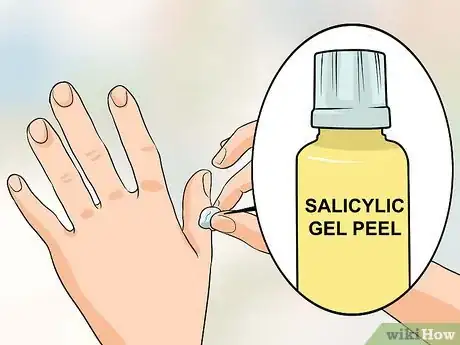
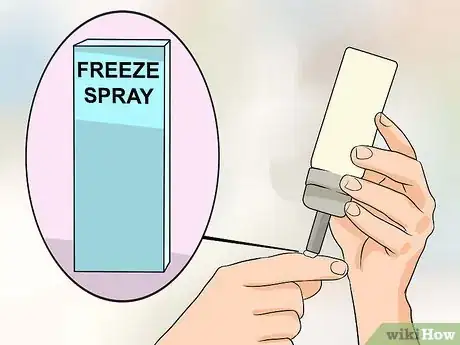
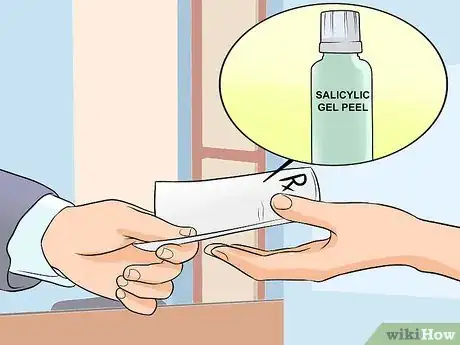
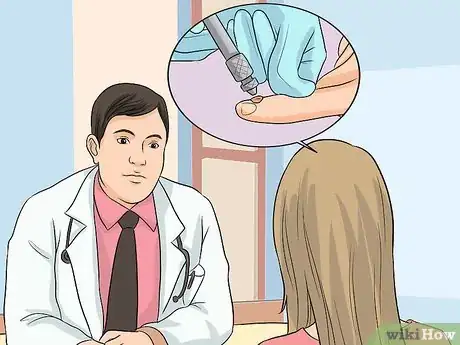
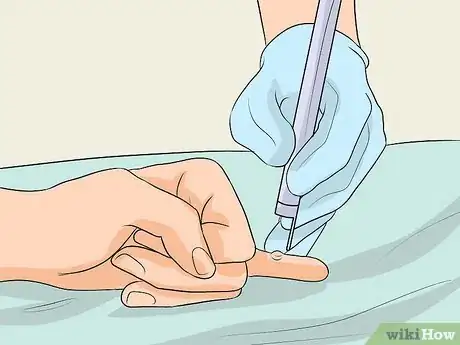
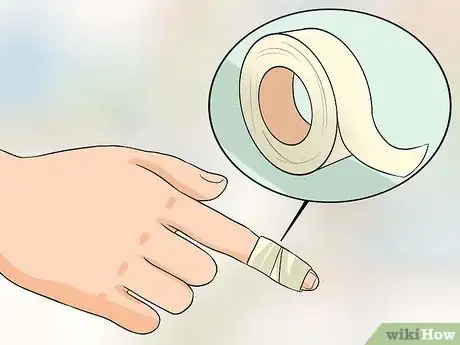
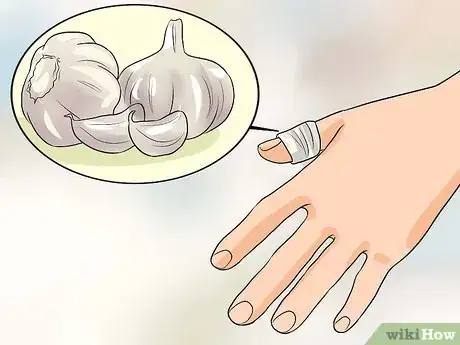
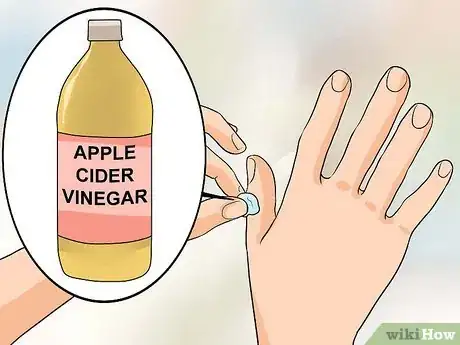
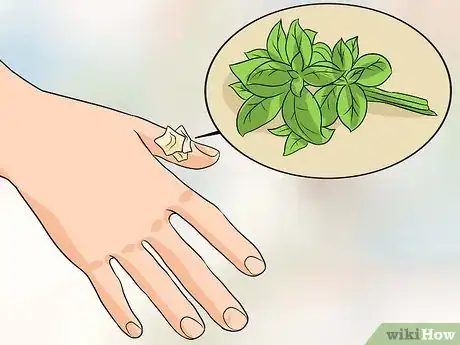
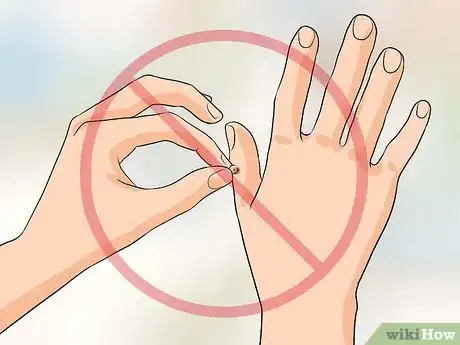
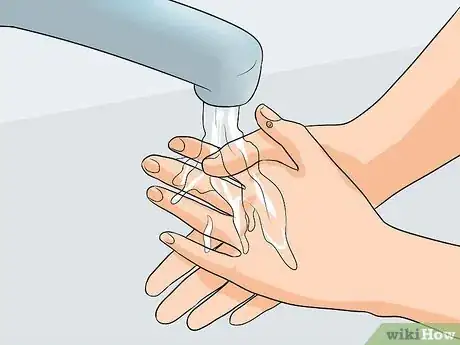
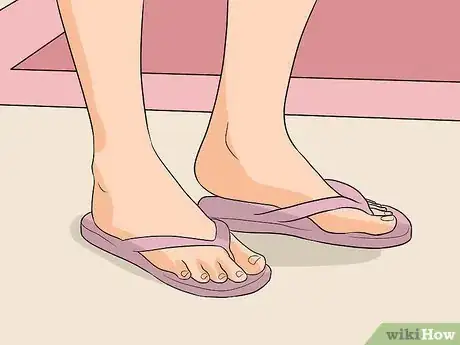

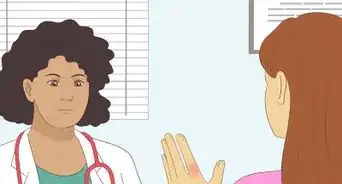
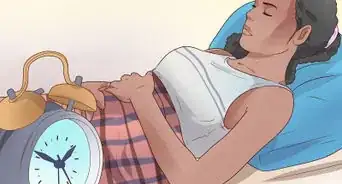
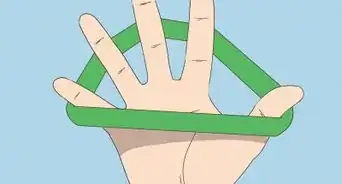


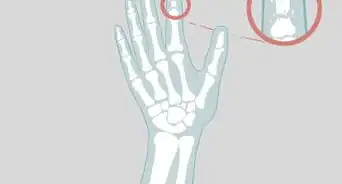
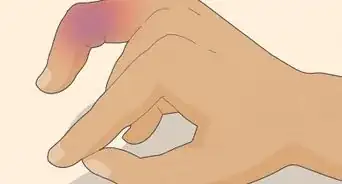

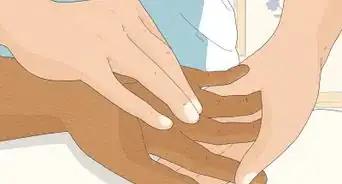

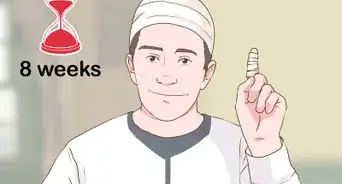










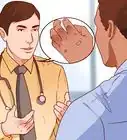
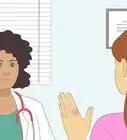





































Medical Disclaimer
The content of this article is not intended to be a substitute for professional medical advice, examination, diagnosis, or treatment. You should always contact your doctor or other qualified healthcare professional before starting, changing, or stopping any kind of health treatment.
Read More...